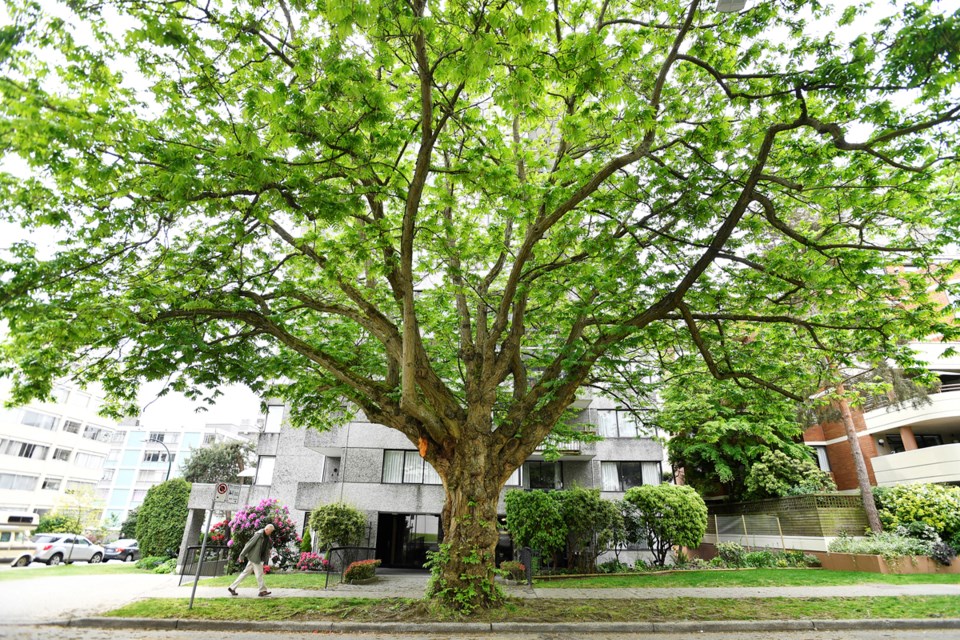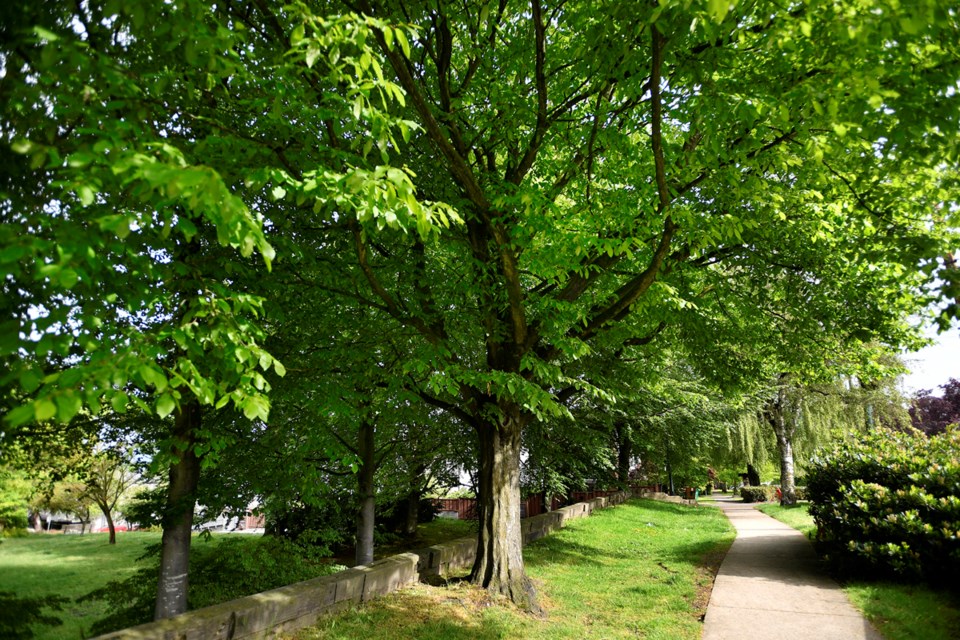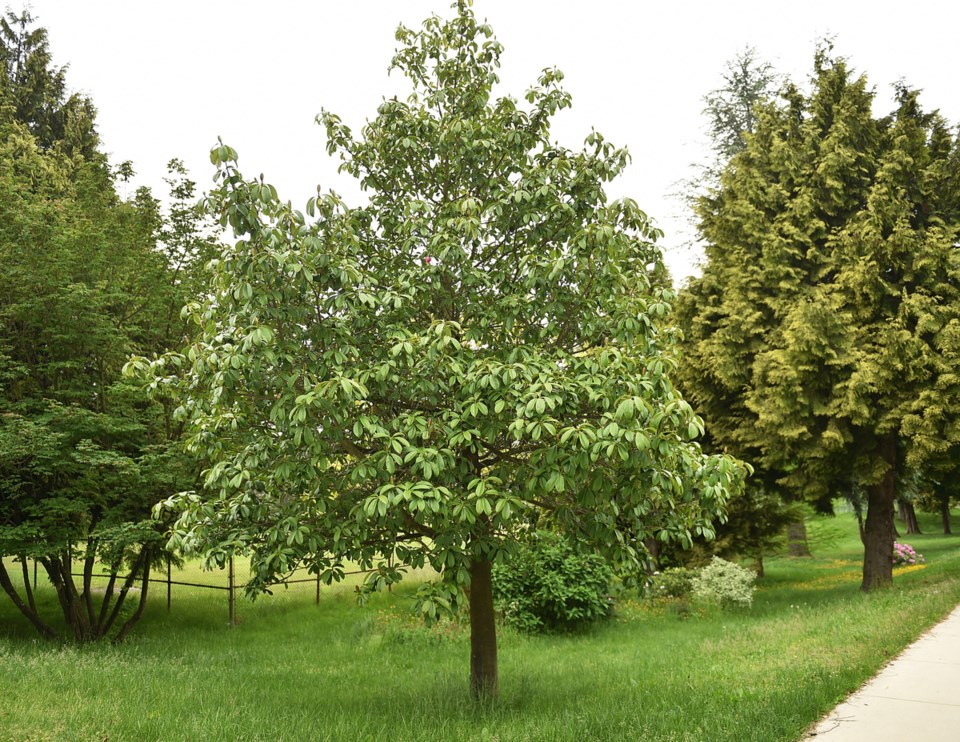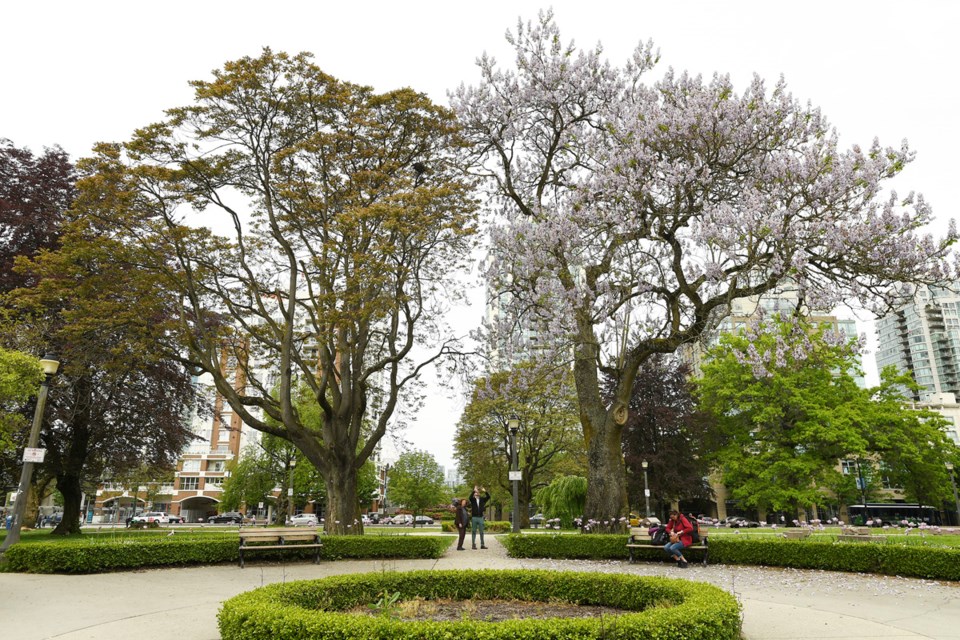As part of the Courier’s search for Vancouver’s tallest tree, we reached out to the Vancouver Park Board for some advice on other points of interest found in Vancouver’s tree canopy.
There are roughly 540,000 trees in Vancouver’s parks and on the streets covering more than 500 different species, so there’s no shortage of options.
The parameters of our request to the park board were specifically open ended — pretty trees, unique trees, rare trees or tall trees.
Here’s what the park board told us.
* If visual beauty is your ball of wax, start at Thornton Park near the CN Rail station. There’s a Paulownia tree smack dab in the middle of the park flowing with lavender. What makes the Paulownia unique is its reputation for being a fast-growing, hardy tree that can flourish in harsh environments. The tree in Thornton Park is one of the largest in Metro Vancouver.
“There is a precautionary tale to planting this tree though, it can be invasive in the inner city because its seeds are so successful at growing in the built environment,” park board spokesperson Daria Wojnarski told the Courier by email.
* One wonders who the final arbiter of species names is when it comes to the Caucasian Wingnut. Weird name aside, there’s a pretty magnificent specimen at the intersection of Chilco and Comox streets, and it’s one of the few in the entire region. The Caucasian Wingnut typically grows naturally from Ukraine to Iran, and it blooms in the late spring.

* The Cascara tree is an interesting case study. It doesn’t get the same play as cedars, firs or wingnuts, but its medicinal properties are said to cure everything from headaches and sores to constipation. They can be found in Stanley Park and on the boulevard in the 400 block of East 30th Avenue, while a solitary specimen is growing at the southwest corner of Nanaimo and McGill Streets.

* The line of trees along the south end of the Cambie Corridor has seen a lot. The Giant Sequoias and Golden Scots Elms that dot the boulevards between King Edward and 29th avenues were sourced and planted by park board horticulturalists Ernie Pitt and Bill Livingstone in the 1950s to enhance the drive up to the then newly-opened Queen Elizabeth Park.
“They were carefully protected during the construction of the Canada Line subway, which runs underneath and offset slightly,” Wojnarski said.
* Outside of being one of the more expensive wood types to purchase, cedar is central to First Nations for food, medicine and transportation. Researchers suggest the oldest trees in Vancouver are, in fact, red cedar located in Stanley Park, and they’re believed to be around 600 years old. A cluster of huge western red cedars can be seen along Tatlow Walk in Stanley Park.
* With the new reality of severe fire seasons being a constant every year, it’s no wonder the park board has a keen interest in broadleaf evergreens — they’re less prone to burning, create shade on the forest floor, reduce temperatures and promote more humidity. Two specimens in particular were flagged by park staff: the Lithocarpus (beech family) and the Manglietia (magnolia family). A large specimen of Lithocarpus is in Stanley Park just north of the pitch-and-putt ticket booth, while a young Manglietia near the intersection of Willow Street and West 33rd Avenue is in bloom with large, bright red “swan-like” flowers.

@JohnKurucz
Read more Vancouver from Above stories HERE.



